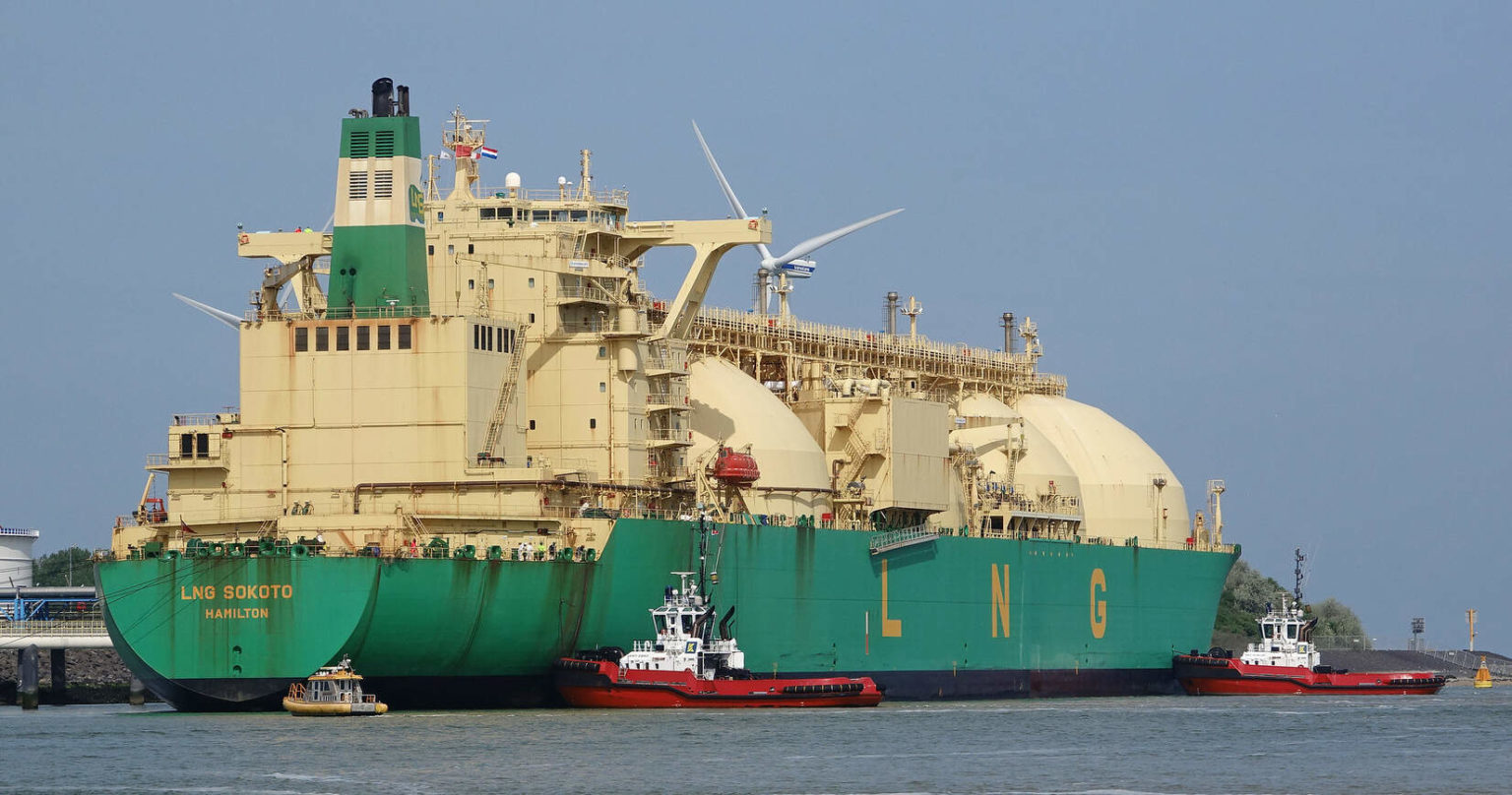Last year, the financial prospects for the North American natural gas market were looking grim, as nervous investors started pulling back and producers announced big spending cuts and layoffs.
Today, the challenges facing the gas industry here have only worsened, even for LNG exports, its much-vaunted savior.
For example, a year ago, Chesapeake Energy — a leading producer of natural gas in the U.S. — was showing signs of financial stress and its stock price was near an all-time low of $2.60. The stock is now worth less than $0.20 a share.
The Canadian natural gas market was in worse shape than the U.S. market and its status has not improved. Last week, Berkshire Hathaway, owned by business magnate and investor Warren Buffett, announced it was backing out of an agreement to invest $4 billion in a liquefied natural gas (LNG) facility in Quebec, Canada.
“They’ve basically all gone away, haven’t they?” Cameron Gingrich, a director at energy consultancy Solomon Associates, said of large investors in Canadian LNG, according to The Financial Times.
Some investors appear to have finally woken up to the financial reality for natural gas and LNG in North America. And that was before the recent crash in the oil and gas markets.
Back to the Basics of Supply and Demand
The American fracking boom of the past decade, quite simply, has created a vast oversupply in the current gas market. Before the last financial crash in 2008, natural gas prices peaked at over $12/MMBtu (one million British thermal units). That was also right before natural gas production via fracking really began to flood the market.
The current price is now below $2/MMBtu. Natural gas producers need a price of at least $2.50 to break even, says Morgan Stanley analyst Devin McDermott, as reported by trade magazine World Oil.
A second factor causing the gas oversupply is that the oil industry, separate from fracked gas specialists like Chesapeake, have also started producing large amounts of “associated gas,” which comes out of fracked oil wells. So much of this gas is now produced that in the Permian shale play — the largest oil-producing field in the country — gas often has a negative price. In other words, it has no market value.
It’s a simple case of supply and demand. North America is producing too much natural gas, and its market price is significantly less than the cost to produce it.
As World Oil reported in January, “Prices briefly dipped below $2/MMBtu on Friday [January 17] for the first time since 2016. At that level, U.S. producers simply don’t make money.”
More than a month later, the price is $1.80/MMBtu.
LNG Exports Were Supposed to Save North American Gas Producers
However, the industry had a plan to deal with this oversupply: super-chilling the natural gas into LNG and exporting it to the rest of the world. In 2013, The American Oil and Gas Reporter hailed LNG exports as the “light … at the end of the tunnel” for the already troubled and oversupplied U.S. natural gas industry.
In the intervening years, the industry bet big (and continues to bet big) on LNG exports as its savior. But that plan has been complicated by the fact that the U.S. hasn’t been the only one pursuing LNG exports. Countries around the world like Australia and Qatar have also flooded global markets with LNG.
In Japan, which is the largest buyer of LNG, prices have now hit a record low. Another simple case of oversupply driving prices down.
Oil price crash adds to uncertainty for US LNG sector
“Major new capital investment seems largely off the table.” – Energy analyst Katie Bays, co-founder of research and consulting firm Sandhill Strategy. @energybays https://t.co/BKAZ6wyKJc pic.twitter.com/FEd2grnFeA
— Market Intelligence: Energy (@SPGMI_Energy) March 10, 2020
American LNG companies have not fared well in this environment. Tellurian is a major player in the U.S. LNG export business. Its stock lost almost 75 percent of its value in the past week, and it laid off half its workforce.
“We see the U.S. projects struggling,” Carlos Torres Diaz, senior vice president for Rystad Energy, told Bloomberg this week.
Despite these market conditions, the U.S. Department of Energy approved four new LNG export facilities last month.
Renewables Pose Real Threat to Natural Gas
If the economic realities of the gas industry weren’t bad enough, the industry also faces the growing threat of renewable energy becoming more economically competitive. Utilities are increasingly choosing wind and solar for power generation based on the cost.
Warren Buffett is also in the power generation business, and another of his companies announced recently that it will use energy from the biggest solar project in the U.S., currently proposed for federal land in Nevada. With gas at record low prices, Buffet still chose solar because it was even cheaper.
Follow the DeSmog investigative series: Finances of Fracking: Shale Industry Drills More Debt Than Profit
Meanwhile, this week trade publication Utility Dive reported that 95 percent of new power projects proposed in New England are combinations of wind, solar, and storage (batteries). Gordon van Welie, CEO of ISO New England (the organization overseeing power generation in the region) said this reality “reflects a dramatic shift.” According to van Welie, just five years ago the majority of new power generation projects in New England were based on natural gas.
MUST READ article on the across-the-board risks utilities are taking in pushing natural gas as a “bridge fuel”. The renewable energy future is already here and we cannot build a shaky bridge that will threaten both our environment & our economy.https://t.co/BeD5OoyuJJ
— Carson Harkrader (@carsonrader) March 4, 2020
The economics of power generation increasingly favor renewables over natural gas, and evidence continues to show that producing and burning natural gas contributes to the climate crisis, which a new United Nations study shows is accelerating as the world remains “way off track” for meeting international targets.
Despite industry attempts to sell gas as a climate solution and “foundation” fuel, many lines of evidence point out the flaws in the argument that developing natural gas is helping reduce greenhouse gas emissions.
Gas is worse than coal in the short term due to its release of methane into the atmosphere#gas #LNG #auspol
https://t.co/RRxyjwnguQ— Bruce Robertson (@barobertson111) March 9, 2020
‘I’m Done with Fossil Fuel Stocks’
Whatever its promoters say about gas being “clean,” natural gas remains a fossil fuel. And popular investing TV host Jim Cramer recently made waves when he said he was done with fossil fuel stocks.
Many fossil fuel stockholders who didn’t listen to Cramer when he said that in January are likely regretting holding onto those stocks after the recent crash.
U.S. natural gas producers and LNG exporters are in deep financial trouble.
In 2008, Aubrey McClendon was the highest paid Fortune 500 CEO in America, a title he earned by taking home $112 million for running Chesapeake Energy. At the time, Chesapeake’s stock peaked at over $65 a share. That stock is now fetching around $0.15 a share and the company is almost $10 billion in debt.
Natural gas has proven to be a horrible investment. LNG exports were supposed to save the U.S. natural gas industry but those hopes have yet to pan out.
Now, the question is: How many more investors will follow Warren Buffett’s lead, pull their money out of natural gas and invest in renewable energy?
Jim Cramer: ‘I’m done with fossil fuel’ stocks https://t.co/wIqtA0DRS5
— Jacqui Patterson (@JacquiPatt) February 4, 2020
Main image: LNG SOKOTO, an LNG tanker. Credit: Kees Torn, CC BY–SA 2.0
Subscribe to our newsletter
Stay up to date with DeSmog news and alerts







